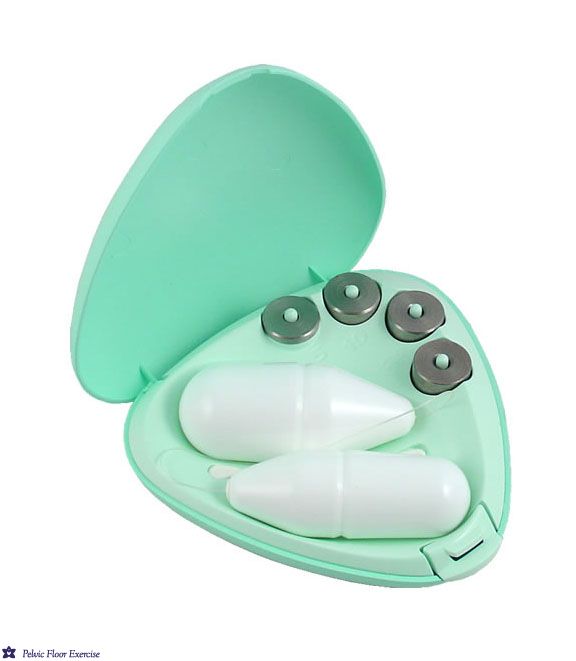3 Steps to Leak Free Gym Sessions
3 Steps to Leak Free Gym Sessions

3 things you can do to stop leaking at the gym.
Do you leak when you exercise? Do you make an excuse not to attend if your gym session includes running, skipping or, even worse, double unders and box jumps?
This is called Stress Urinary Incontinence (SUI) and you are not alone, but there are solutions!
A recent study1 of over 4500 women found that 46% had stopped exercise they previously enjoyed due to their pelvic floor symptoms. Of these, 41% reported the reason to be SUI.
Many long term health issues can result from not exercising. For females in particular, due to hormonal fluctuations throughout life’s stages, lack of exercise can affect bone strength, muscle mass and cardiovascular systems. These are all vital to living a long and healthy life.
Skeletal muscle mass (the percentage of muscle you have compared to bone and fat) is an independent risk factor for mortality2 . In other words, the more muscle you maintain the likelier you are to live longer, despite any other factors.
The benefits of exercise for positive mental health include increases in the 'happy hormones' like serotonin and endorphins which help reduce stress and anxiety and promote good sleep.
Therefore, from both a physical and mental health perspective, stopping or avoiding exercise should not be the option you choose if you are leaking with exercise.
What are 3 things you can do to stop leaking when exercising?
1. Strengthen your pelvic floor
How? by doing pelvic floor muscle training (PFMT) or kegels as they are sometimes called. This is best done under the supervision of a pelvic floor physiotherapist who can guide you in an individualised program suited to your particular needs, just like you would need if rehabilitating a knee injury.
There are two areas of your pelvic floor that need attention.
- the deep layer which should feel like a close and lift as if you are lifting your anus towards your belly button (up and forward)
- the urethral sphincter which is the tiny muscle that wraps around the outside of the urethra. It is activated when you are trying to stop the flow of urine. Whilst we don’t usually tell you to do this regularly as an exercise (stop the flow) you can test yourself to see if you can stop the flow. If you can’t, then practise by imagining you are doing a wee and trying to stop it, holding for a few seconds at a time. This can be very helpful if your main problem is pesky leaking with jumping exercises.
We need to work the deep pelvic floor to support the bladder and bladder neck, and the more local urethral sphincter to help close the urethra to stop the leaks.
2. Use a support device
Just like you might wear a knee sleeve to support you knee or an ankle brace for your ankle that you sprained. These can be either:
- a pessary - fitted specifically for you by a health professional to support a prolapse or
- an over the counter urethral support.
There are two excellent devices on the market here is Australia. Contiform, and new to the market Efemia – a silicone insertable device to support the mid- urethra.
Each has its merits. They are both available as starter sets to allow you to trial the 3 sizes to see which works best for you. Some women even find they use different sizes for different activities and/ or at different times of the month as hormonal influences can make you feel more or less supported.
They also both come in individual sizes for re -purchase when it is time for a new one once you know which size suits you best.
Compare the cost of one of these devices to the cost of wearing a pad/s daily and the even greater possible long term health costs of avoiding exercise because you are leaking.
Using a urethral support device means you can continue exercising, without fear of leaking, whilst working on strengthening your pelvic floor.
3. Modify or scale exercises so there is no need to stop.
You can do this whilst you are using a support device to allow you to keep exercising.
I had a chat with my friend and colleague, Candice Lamb who is also the head coach at Crossfit Contessa where I train. I asked her to put both her coaching and pelvic floor physio hats on at the same time to give you some tips for managing exercise to allow you to keep training.
She advised to look at several things:
Mobility
- Difficulty getting into positions often results in breath holding and therefore increased intra-abdominal pressure (IAP) that the pelvic floor musculature cannot handle
- If we then add external load, intensity and speed to this it creates a bigger demand on the pelvic floor muscles and leaks can happen.
- Improving mobility can really help!
Breath
- Breath holding either because of the above poor mobility, or a lack of awareness, is also a common issue.
- Think about breathing OUT during the hardest part of the movement. For example with a squat:
- breathe in at the top and hold to go down into the squat
- breathe out on the way up
- keep this breathing pattern consistent throughout the set which sometimes means we need to
speed up our breathing rate to match it
OR
slow the movement down to match your breathing
The usual culprits are often jumping movements like double unders and box jumps, or higher level abdominal work like toes to bar.
I asked Candice how to reframe some of these movements to allow someone to continue whilst also aiming to reduce leaking.
She said to first identify the issue:
Is it pelvic floor strength and/or endurance?
Solution: continue your PFMT
Is it a skill development issue? ie are you landing heavily?
Solution: Talk to your coach for skill progression. Some examples may be:
- use a lower height box for box jumps to work on softer landings which will reduce the impact on your pelvic floor.
- use dumbbells instead of a barbell to limit the weight you can lift, but still make the workout challenging.
- reduce the rep scheme to a number that is achievable WITHOUT leaking or build in forced rest breaks.
Is it the pairing of the movement with something else that is very taxing on the pelvic floor?
For example does the workout combine multiple jumping movements together or a heavy lift plus jumping or lots of core work plus jumping?
Solution: Talk to your coach about substituting some of these movements
- so you can still work out but use a different combination of movements.
- we will often pick one thing to challenge the pelvic floor, but then sub out anything else to a more simple (but still very tough) movement such as bike calories!
And then to use some of these tips for classes:
- Pick ONE thing in a workout that might be taxing on the pelvic floor and scale the rest.
- Practise skills in non - workout environments. This will allow you to work a little more on technique, breathing, bracing as needed without the added elements of speed and intensity that we see in workouts.
- Use support devices (such as Efemia or Contiform) for these movements. Use them like you would grips for your hands or knee sleeves for your knee. They are there to help protect and support your pelvic floor tissues.
Candice then left me with these thoughts:
- Normalise these conversations in the gym! The more we talk about it, the more we can normalise the issue and encourage people to seek help.
- We WANT women to keep training, the benefits of HIIT are countless! but we know that SUI is a huge barrier to this.
- Talking about it will only help women realise that they aren't alone and that there is help available.
- It will also encourage trainers and coaches to level up their knowledge in this area!
Summary 3 ways to work out leak free:
1. Train your pelvic floor
2. Support your urethra
3. Scale your workout – don’t stop it!
References
1. J.G. Dakic, J. Cook, J. Hay-Smith, et al., Pelvic floor disorders stop women exercising: A survey of 4556 symptomatic women, Journal of Science and Medicine in Sport, https://doi.org/10.1016/j.jsams.2021.06.003
2. Abramowitz MK, Hall CB, Amodu A, Sharma D, Androga L, Hawkins M (2018) Muscle mass, BMI, and mortality among adults in the United States: A population-based cohort study. PLoS ONE 13(4): e0194697.
https://doi.org/10.1371/journal.pone.0194697
3. https://www.healthdirect.gov.au/exercise-and-mental-health
*This blog is intended as general information only, please seek personal advice from your health providers for your individual needs.
Fiona Rogers Candice Lamb
BPthy PGD ExSpSC APAM BPhty PGD Continence and Womens Health
Clinical Director Level 2 Crossfit Coach
Pelvic Floor Exercise





